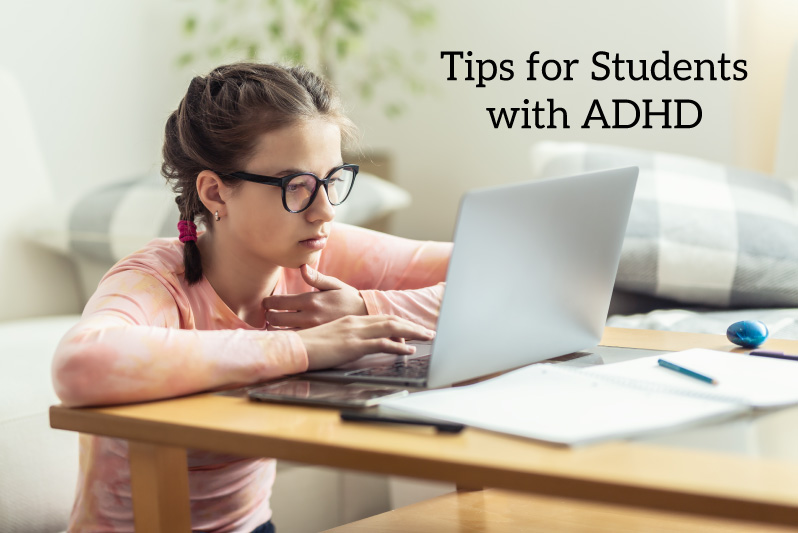
Attention Deficit Hyperactivity Disorder (ADHD) is a common neurodevelopmental disorder that affects many students, impacting their ability to focus, stay organized, and manage time effectively. However, it’s crucial to recognize that these attention deficits may not exist in isolation. Sometimes, students with ADHD may also face additional learning challenges. Many students with ADHD are diagnosed without a thorough examination of their underlying learning profiles, which could be contributing to their attention challenges.
At Lindamood-Bell, we believe in addressing the root causes of learning difficulties through customized interventions that consider the whole child, not just the symptoms. Our approach is grounded in the understanding that effective support for students with ADHD begins with a comprehensive assessment and personalized instruction plan designed to strengthen student’s learning abilities.
Understanding ADHD in Students
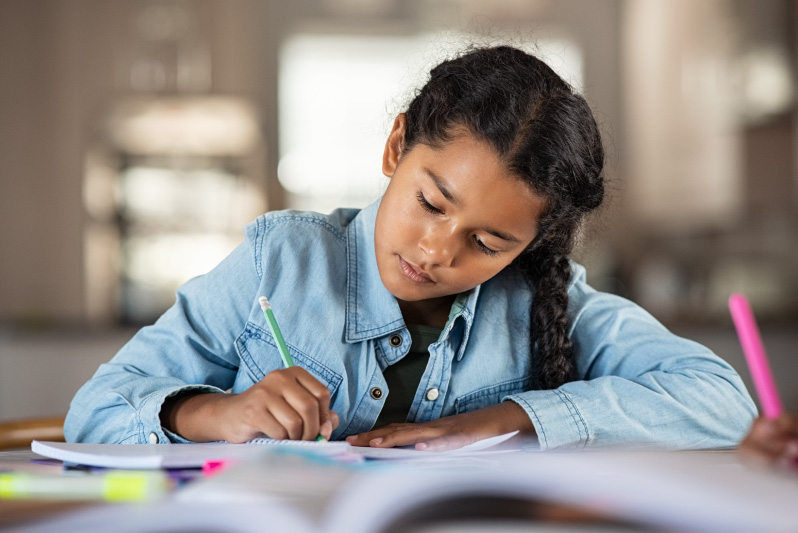
Students with ADHD may have a diminished ability to concentrate, manage impulses, and stay organized, all of which are critical skills for academic success. These challenges can manifest in various ways, including:
- Difficulty staying focused on tasks: Students with ADHD may find it hard to pay attention to lessons, complete assignments, or follow through on tasks.
- Impulsivity: Students with ADHD might act without thinking, which can lead to difficulties in social interactions and classroom behavior.
- Disorganization: Students with ADHD can face significant hurdles in managing time, keeping track of materials, and following schedules.
These challenges can have a profound impact on the academic performance of students with ADHD, often leading to frustration, low self-esteem, and disengagement from learning.
Tips for Students with ADHD
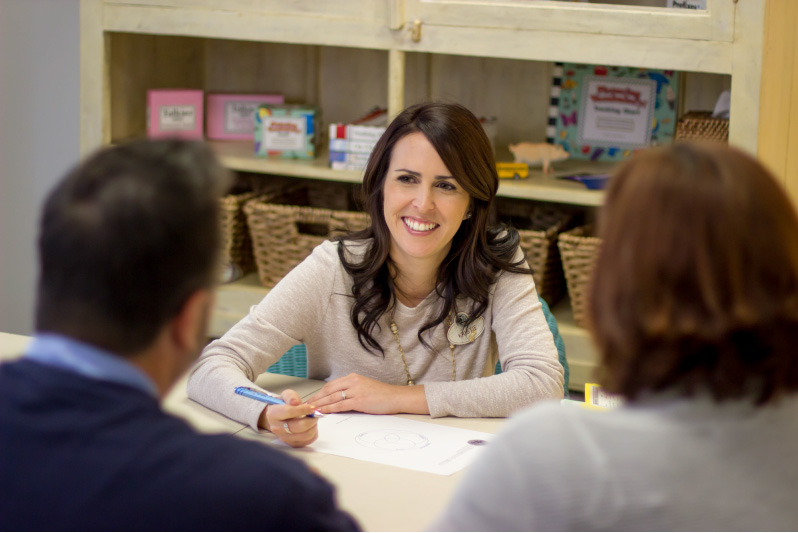
1. Evaluate Student Learning
Often, students with ADHD face additional learning difficulties that can exacerbate their attention challenges. At Lindamood-Bell, our transformative approach begins with a thorough Learning Ability Evaluation. This evaluation uncovers any underlying learning issues, providing a clear understanding of your child’s needs and how best to address them. We then create a personalized instruction plan tailored to each student’s unique learning profile, targeting the root causes of their learning difficulties. Discover how Lindamood-Bell can make a lifelong difference in your child’s education—schedule a Learning Ability Evaluation today. Learn more and book your evaluation.
2. Creating a Supportive Learning Environment
To help students with ADHD thrive, it’s essential to create a learning environment that supports their needs. Here are some strategies:
- Establish Consistent Routines and Schedules: Consistency helps students with ADHD know what to expect, reduces anxiety, and improves focus.
- Set Clear Expectations for Behavior and Performance: Clear guidelines provide students with a framework for success, helping them understand what is expected of them.
- Implement Strategies to Minimize Distractions: Reducing environmental distractions, such as noise or clutter, can help students with ADHD maintain concentration during lessons.
3. Effective Study Techniques for Students with ADHD
Students with ADHD benefit from study techniques that help them organize their thoughts, manage their time, and stay engaged with the material.
- Organizational Strategies for Better Time Management: Tools like planners, to-do lists, and timers can help students with ADHD break down tasks and manage their time effectively.
- Techniques to Improve Concentration During Studying: Short, focused study sessions with regular breaks can help maintain attention. Active learning techniques, such as discussing concepts or teaching them to others, can also be effective for students with ADHD.
- Using Visual Aids: Visual aids such as charts and diagrams can make learning more engaging and help students retain information.
4. Building Motivation and Self-Confidence
Supporting students with ADHD goes beyond academics. It’s important to foster their self-esteem and encourage a positive attitude toward learning.
- Identifying and Leveraging Individual Strengths: Every student has unique strengths. Identifying these can help boost their confidence and motivation.
- Encouraging Self-Advocacy and Self-Monitoring: Teaching students with ADHD how to recognize and communicate their needs effectively is a crucial skill for lifelong success.
- Recognizing and Celebrating Achievements: Regular recognition of accomplishments, no matter how small, helps build a positive self-image.
5. Collaborating with Teachers and other Professionals
A strong support system is vital for the success of students with ADHD. Collaboration between educators, parents, and professionals ensures that the student receives consistent support across all environments.
- Effective Communication Strategies with Educators: Regular communication between parents and teachers ensures that strategies are aligned and the student’s needs are met.
- Promoting a Collaborative Relationship between Home and School: Parents and teachers working together can create a more supportive and understanding environment for a student with ADHD.
- Get Help from Experienced Professionals: Engaging with professionals who specialize in helping students with ADHD and learning challenges can provide additional support and guidance.
Find Support to Improve Learning for Students with ADHD
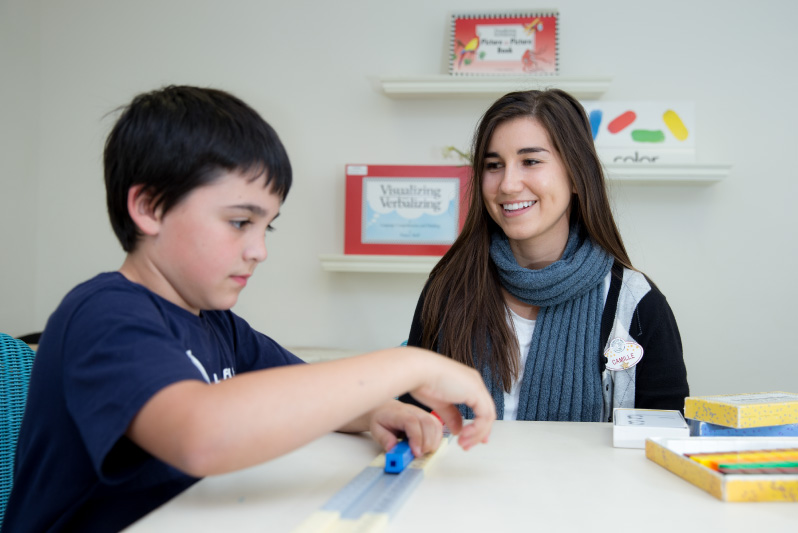
At Lindamood-Bell, we understand the unique challenges that students with ADHD face in their learning journey. Our instruction is designed to improve foundational learning skills for students with ADHD. We use evidence-based programs, such as Seeing Stars and Visualizing and Verbalizing, to target the underlying cognitive skills necessary for reading, comprehension, and math, helping students with ADHD improve academically and gain confidence. Our personalized and flexible learning environment meets the unique needs of each student, ensuring they receive the support they need to thrive.
With proven methods and techniques, Lindamood-Bell has been supporting students with ADHD for years. Our programs have a track record of success, helping students overcome learning difficulties and achieve their full potential.
Students with a Prior ADHD Diagnosis Who Received Decoding and Comprehension (Combined) Instruction
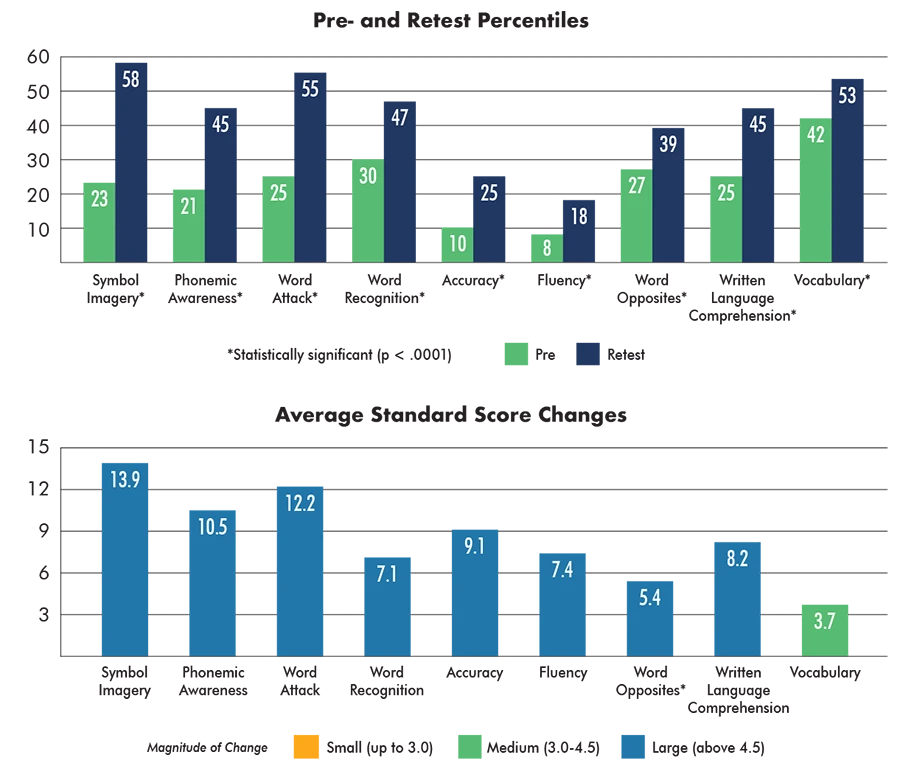
Students with a prior ADHD diagnosis, who had both decoding and language comprehension difficulties, received both Seeing Stars and Visualizing and Verbalizing instruction. These students achieved significant improvements in decoding and comprehension. They made large (statistically significant) standard score changes on eight of nine measures.
Years: Jan. 2008 – Dec. 2023
Number of Students: 2,136
Average Age: 11.9
Average Hours of Instruction: 155.4
Lindamood-Bell Instruction Implemented: Seeing Stars and Visualizing and Verbalizing
Find additional Learning Center data, including growth made by students with Specific Learning Disabilities and Autism, here. The Child Mind Institute is an excellent resource for information to help children who have learning and attention challenges, including students with ADHD. Visit their website at https://childmind.org/topics/adhd-attention-problems/.
Success for Students with ADHD at Lindamood-Bell
One of Lindamood-Bell’s key advantages is our ability to provide personalized and flexible learning environments. We understand that every student is unique, and we tailor our instruction to meet their specific needs. Our one-on-one instruction allows us to address the individual challenges faced by students with ADHD.
Don’t just take our word for it—hear success stories from Lindamood-Bell students with ADHD. These stories showcase the progress and achievements that can be made with the right support and instruction.
For more information on how Lindamood-Bell can support your student with ADHD, contact us today. Together, we can build a brighter future for your child. Call us at 800-233-1819 or request information





